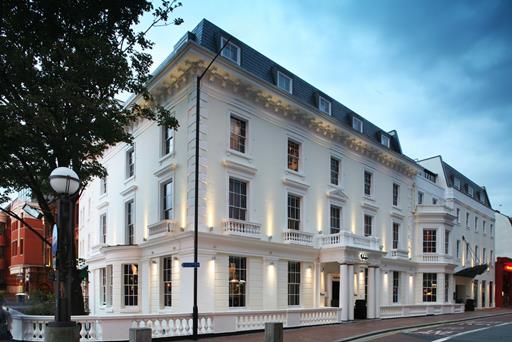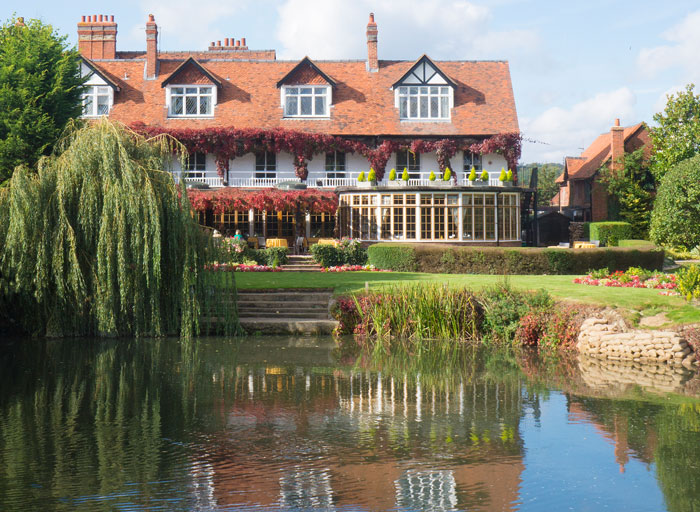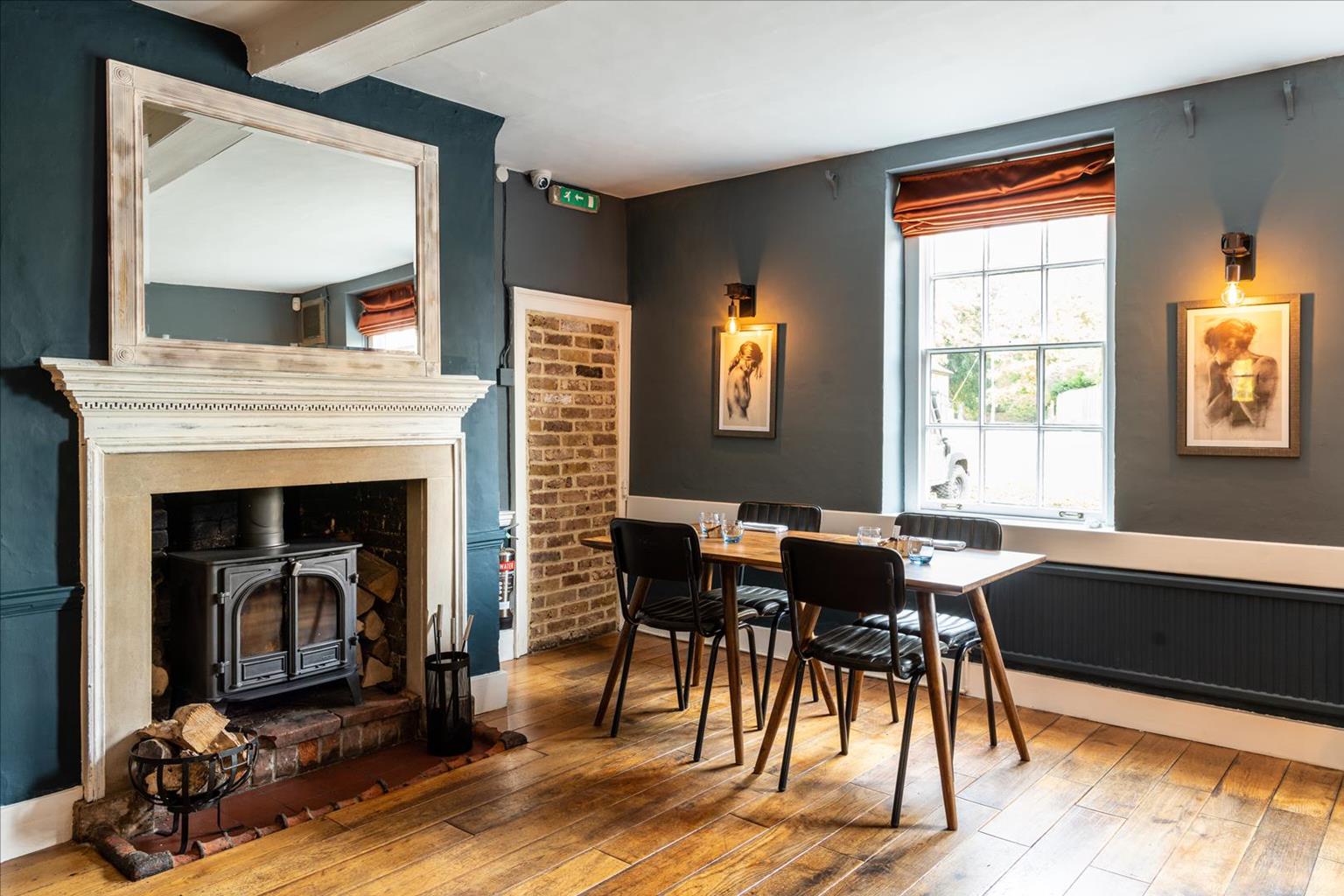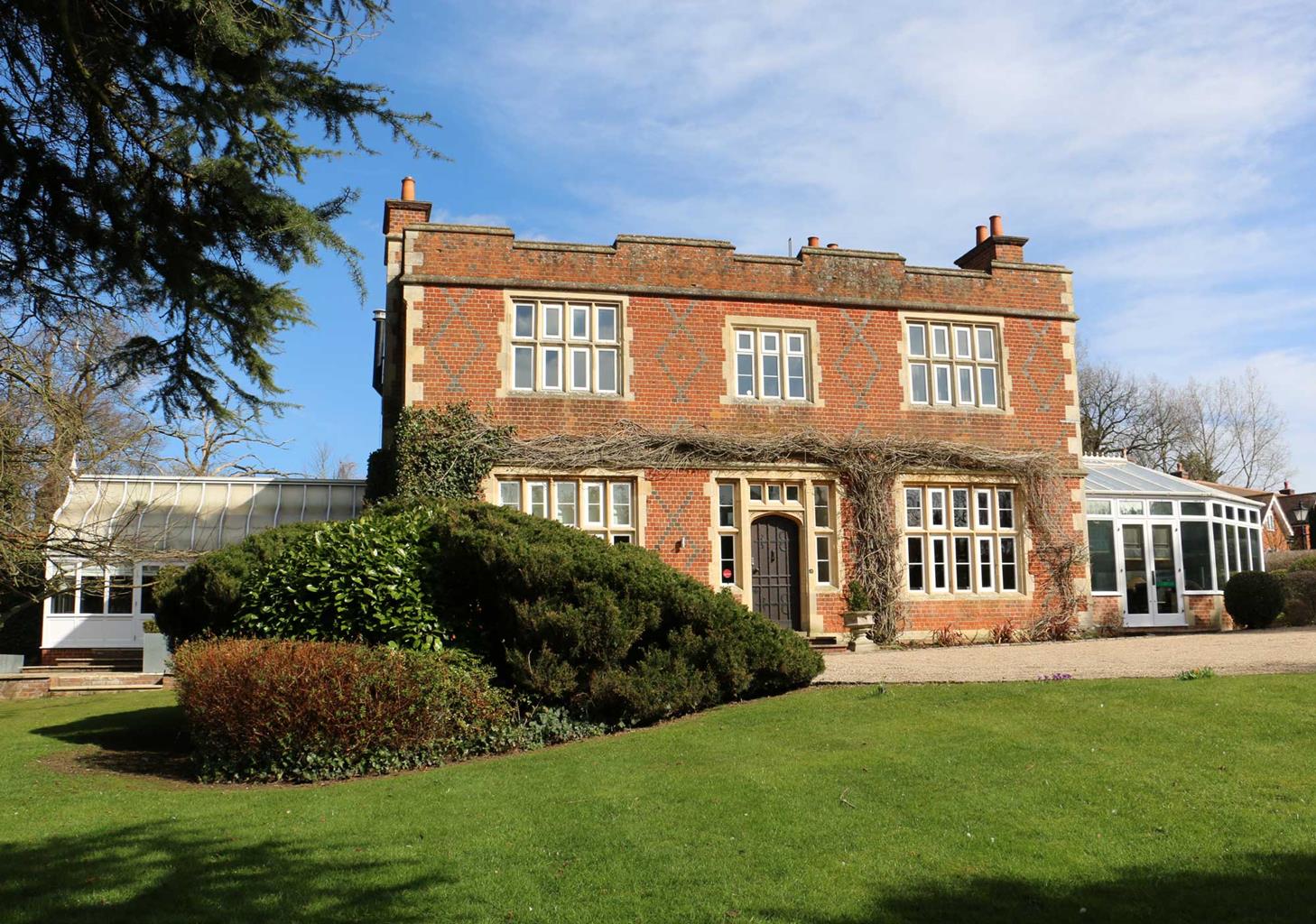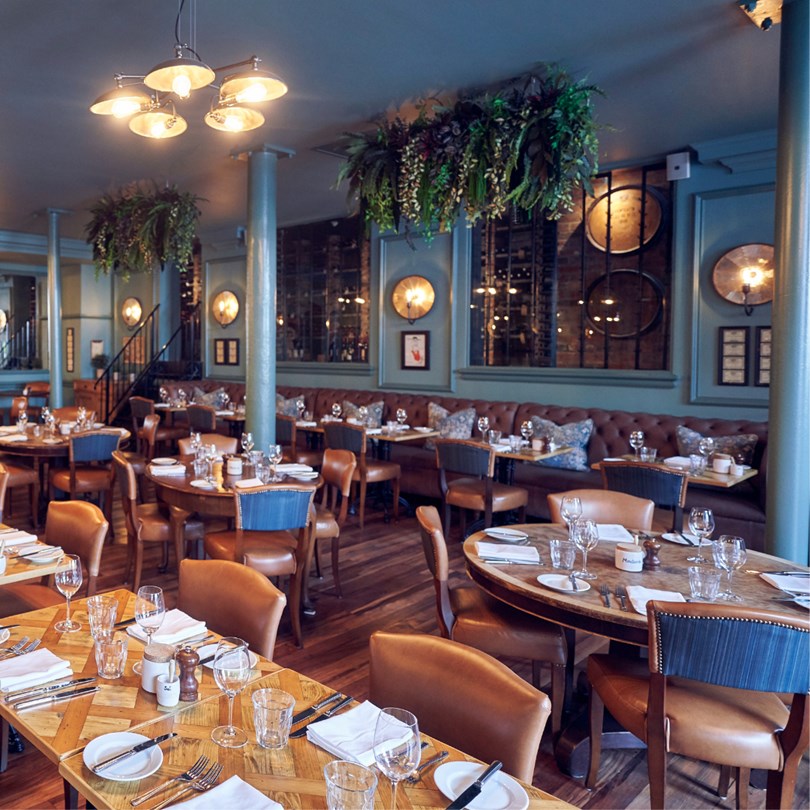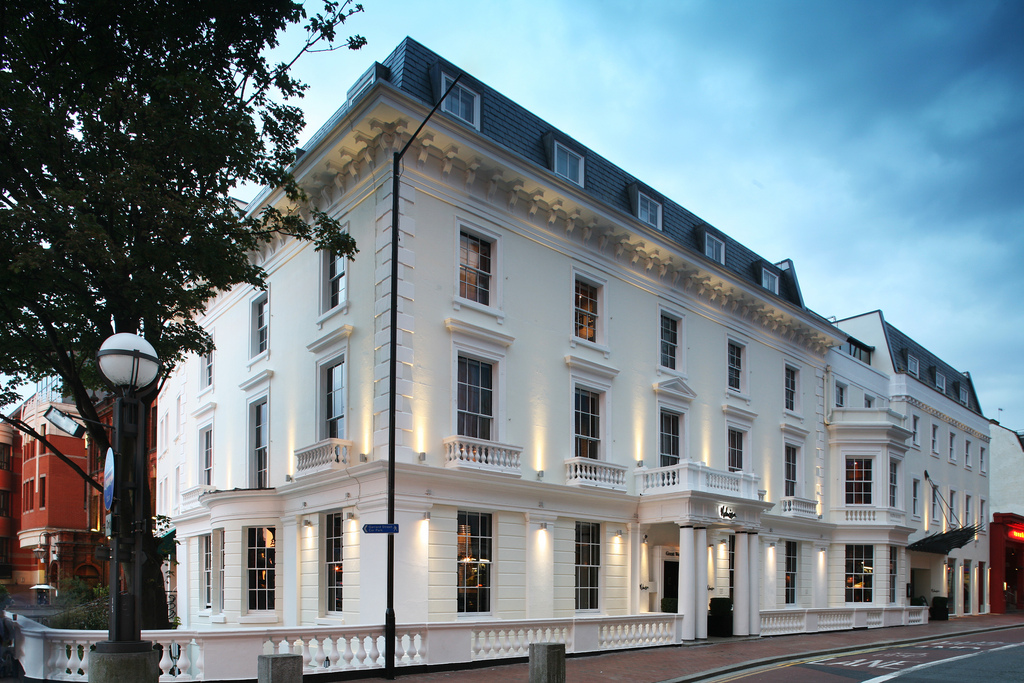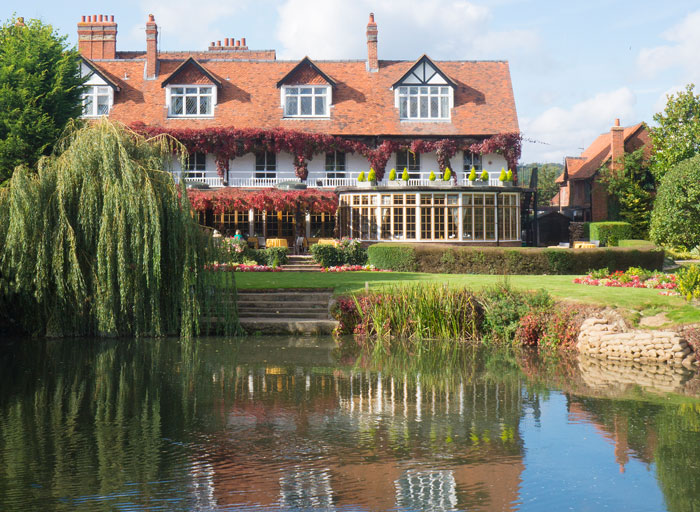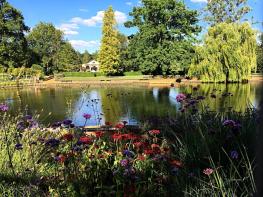Brambly Cottages provide a comfortable home from home on a working farm with cattle, crops and…
Mapledurham and The Eagle has Landed

2.25 miles (3.6kms)
About the walk
Mapledurham and its timeless Thames setting in the southeast corner of Oxfordshire create an idyllic picture. The village is one of only a few settlements in the area that have not been blighted by urban development. The lack of a road bridge providing a direct link with nearby Reading has, in effect, ruled out the possibility of expansion, and Mapledurham remains a sleepy, rather isolated village approached down narrow winding lanes running deep into the heart of the countryside. Not surprisingly, life in this part of the world tends to be on the quiet and uneventful side.
However, it was a very different story back in 1976. If you could somehow transform yourself back in time to the very hot summer of that year you would have found Mapledurham a hive of activity. The village might have been hard to recognise too – and, even more puzzling, its name had changed to Studley Constable. An oldfashioned dairy shop displayed gleaming milk churns in the window; stirrup pumps and baby Austins added to the nostalgic picture of rural England; and, perhaps most bizzare of all, there were signposts to the east-coast port of King’s Lynn.
Almost everywhere you went, there was a genuine feeling that the village had stood still since World War II. But why? What did it all mean? Still mystified? The clue is in the title of this walk. Mapledurham was doubling as a film set for the celluloid version of The Eagle Has Landed, a classic adventure yarn by thriller writer Jack Higgins. If you have read the book or seen the film, then you’ll know the plot concerns an attempt to kidnap Winston Churchill while he is spending the weekend in Norfolk in 1943.
Much of the film, which stars Michael Caine and Donald Sutherland, was shot at Mapledurham, and the village Church of St Margaret, where the villagers are held captive, features prominently. However, if you expect to get a drink at the delightfully named Spyglass and Kettle, you’ll be disappointed. The pub was a clever illusion created by film designers and artists, constructed temporarily where the car park now stands. Easy access to London and the success of The Eagle Has Landed have resulted in Mapledurham being regularly chosen as a location for film and television productions. They include Class Act starring Joanna Lumley, and Inspector Morse with the late John Thaw as the world-famous Oxford sleuth. The gently lapping Thames, imposing Mapledurham House and neat rows of handsome houses in the main street create just the right images for the large and small screen – the quintessential English village.
Walk directions
From the small car park by the church, turn left to explore the church before walking back along the village street. Pass a row of almshouses and reach a bridleway on the right, signposted to Gravel Hill. Pass the lodge on the corner and a telephone box and follow the concrete track for 200yds (183m) to a gate.
Go through the gate and turn left up the field, soon going through a second wooden gate into Park Wood. Ascend steadily, to a statue mounted on a stone plinth, itself mounted on a tall brick plinth. Continue on the path for 350yds (320m), then cross a track diagonally. In a few paces keep half right to a straight track. On leaving the woodland keep straight ahead for another 200yds (183m), to a gate.
Go through this and turn sharply left, along Pond Lane. Follow this concrete track round several bends for a little over 0.5 miles (800m) to Lilley Farm.
Turn left at the road and follow it for 100yds (91m) until you reach the end of Lilley Barn on the left, where the lane curves right. Go left here and immediately right, behind the hedge, to cross a stile by a galvanised gate. Walk straight ahead to the next gate and cross the field, keeping the brick and timber-framed Step Cottage to your right. Avoid the stile leading out to the road and continue crossing the field, eventually curving to the left at the point where you see the road ahead, and enjoying good views over the Thames Valley ahead. The walk crosses a slope and then runs parallel with the lane leading to Mapledurham. Avoid a stile on the right opposite a white cottage, but walk 100yds (91m) further on.
Turn right just before a wire fence, which leads down the field to a footpath sign and a kissing gate, through which steps descend to the lane. Turn left to return to the village centre and Mapledurham House, with its water mill.
Additional information
Mainly farm tracks and field paths
Parkland and farmland on northern bank of Thames
On lead in Mapledurham, under control elsewhere
OS Explorer 171 Chiltern Hills West
Permission kindly given for walkers to use small car park adjacent to church
None on route
WALKING IN SAFETY
Read our tips to look after yourself and the environment when following this walk.
Find out more
Also in the area
About the area
Discover Oxfordshire
Located at the heart of England, Oxfordshire enjoys a rich heritage and surprisingly varied scenery. Its landscape encompasses open chalk downland and glorious beechwoods, picturesque rivers and attractive villages set in peaceful farmland. The countryside in the northwest of Oxfordshire seems isolated by comparison, more redolent of the north of England, with its broad views, undulating landscape and dry-stone walls. The sleepy backwaters of Abingdon, Wallingford, Wantage, Watlington and Witney reveal how Oxfordshire’s old towns evolved over the centuries, while Oxford’s imposing streets reflect the beauty and elegance of ‘that sweet city with her dreaming spires.’ Fans of the fictional sleuth Inspector Morse will recognise many Oxford landmarks described in the books and used in the television series.
The county demonstrates how the strong influence of humans has shaped this part of England over the centuries. The Romans built villas in the pretty river valleys that thread their way through Oxfordshire, the Saxons constructed royal palaces here, and the Normans left an impressive legacy of castles and churches. The philanthropic wool merchants made their mark too, and many of their fine buildings serve as a long-lasting testimony to what they did for the good of the local community.
Nearby stays
Restaurants and Pubs
Nearby experiences
Recommended things to do
Why choose Rated Trips?
Your trusted guide to rated places across the UK
The best coverage
Discover more than 15,000 professionally rated places to stay, eat and visit from across the UK and Ireland.
Quality assured
Choose a place to stay safe in the knowledge that it has been expertly assessed by trained assessors.
Plan your next trip
Search by location or the type of place you're visiting to find your next ideal holiday experience.
Travel inspiration
Read our articles, city guides and recommended things to do for inspiration. We're here to help you explore the UK.


